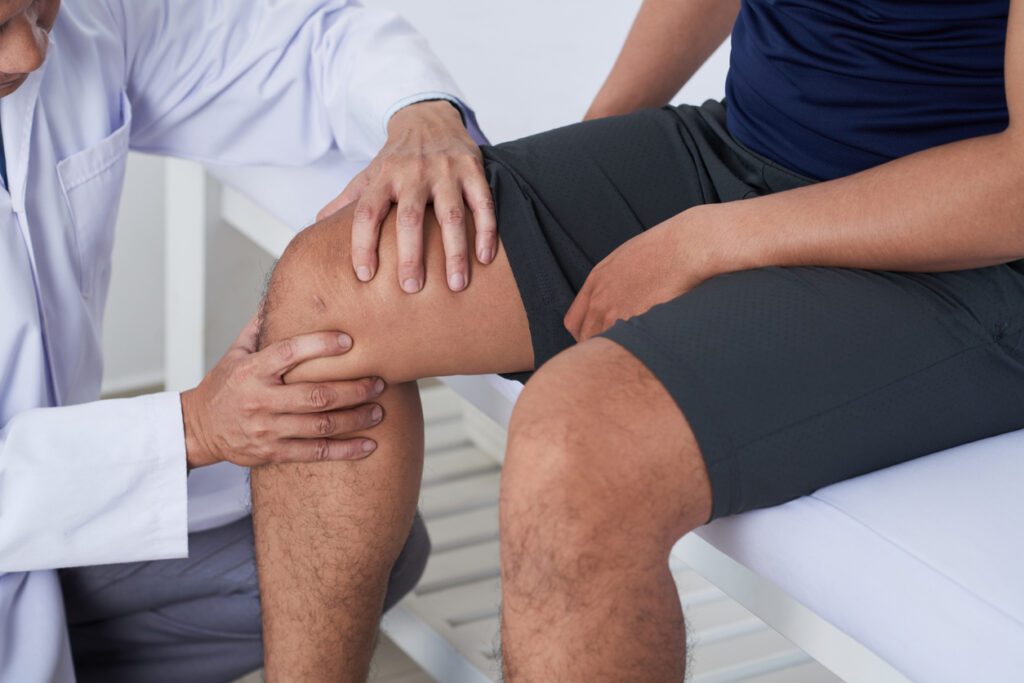Orthopedic Clinic: Navigating Joint Pain Diagnosis and Treatment
Oh, the joys of moving about, dancing, and just living life without a twinge or creak in your joints! Sounds like a dream, right? But for many folks, joint pain is an unwelcome companion that tags along, making every step a herculean task.
Understanding Joint Pain: A Comprehensive Overview
Recognizing the Symptoms of Joint Pain
Before we get down to the nitty-gritty, let’s size up our opponent—joint pain. What’s it look like? Well, it could be anything from a dull ache to a searing sensation, or even a stiffness that hampers your moves like a wrench in the works.
Some common red flags include:
- Swelling or tenderness around the joint
- A reduced range of motion — when your limbs won’t go the distance
- That oh-so-disturbing crunching noise or feeling
Common Causes of Joint Pain
Joint pain can spring from a myriad of sources, such as osteoarthritis, rheumatoid arthritis, bursitis, gout, strains, or sprains. Let’s be straight-up; sometimes, it’s just the wear and tear of living, which takes a toll on our joints over time.
The Impact of Joint Pain on Daily Life
Let’s not beat around the bush—joint pain can put a serious damper on your daily doings. Whether you’re trying to conquer Mount Laundry or wish to saunter in the park, the discomfort can knock you off your feet, interfering with both your work and leisure time.

Seeking Expert Guidance: The Role of Orthopedic Care
When to Consult an Orthopedic Specialist
Alright, when does joint pain push you to play the “doctor” card? If joint pain is cramping your style beyond a week or two, or if home remedies and over-the-counter meds barely scratch the surface, it’s high time to seek an orthopedic specialist—pronto!
The Diagnostic Process for Joint Pain
Rolling up at an orthopedic clinic, what’s in store for you? These docs will put you through the wringer with a head-to-toe physical exam, X-rays, MRI, possibly a CT scan, or even an ultrasound, fishing for the root cause of your woes.
Tailored Treatment Plans for Joint Pain
Here’s the deal—every case of joint pain is unique as a snowflake. So, your doc will whip up a treatment plan that’s custom-fitted to your condition and needs, blending therapies and programs to help you bounce back.
Embarking on the Path to Relief: Treatment Options for Joint Pain
Conservative Treatment Approaches
Rest and Activity Modification
Before you jump into the deep end, start with the basics. Taking a breather and modifying your activities can give your joints the R&R they’re screaming for.
Over-the-Counter Pain Relievers
Let’s hear it for the trusty OTC pain relievers! These bad boys, like ibuprofen or acetaminophen, can knock the edge off your agony. But remember, they’re not a silver bullet, and overdoing it can lead to more headaches—literally.
Physical Therapy and Exercise
Gentle yet firm—that’s the physical therapy mantra. Under a therapist’s guidance, you’ll strengthen the muscles around the joint, increasing stability and reducing the burden on your aching bits. And let’s not overlook exercise—keeping in motion is key to maintaining joint health.

Interventional and Surgical Treatments
Joint Injections
When the going gets tough, the tough get… shots? Yep! Corticosteroid injections directly into the joint can act as a super-powered anti-inflammatory, showing pain the exit door.
Viscosupplementation
Getting a bit gooey, viscosupplementation involves injecting hyaluronic acid into the joint, aiming to grease the gears and get you moving smoothly once again.
Surgical Procedures for Joint Repair or Replacement
When all else fails, going under the knife might be the ace up your sleeve. From minor repairs to full-blown joint replacements, surgery is the big-league treatment that can reset your body’s hinges when they’re past their prime.
Frequently Asked Questions
Q: Can diet and lifestyle changes affect joint pain?
A: Absolutely! Maintaining a healthy weight, chowing down on anti-inflammatory foods, and sidestepping too much stress can all make a difference in managing joint pain.
Q: Are there any alternative treatments for joint pain?
A: Sure thing. Some folks find solace in acupuncture, chiropractic treatments, or supplements like glucosamine and chondroitin. Always chat with your doc before diving into these options, though.
Q: How long does it usually take to recover from joint surgery?
A: It’s a long road, but most patients can expect a recovery period of several weeks to months. It all hinges on the type of surgery and your commitment to post-op care and physical therapy.
In Summary: Your Action Plan for Joint Pain Relief
So there you have it—a playbook for tackling joint pain. Whether it’s changing your daily routine or embarking on a treatment plan, remember to keep your eyes on the prize—regaining the freedom of movement without pain as your shadow.
If joint pain has gatecrashed your life, don’t let it settle in. Knock on the door of an orthopedic clinic, and stride confidently toward a future that’s pain-free. Now, are you ready to show your joints who’s boss? Let’s get crack-a-lackin’!
